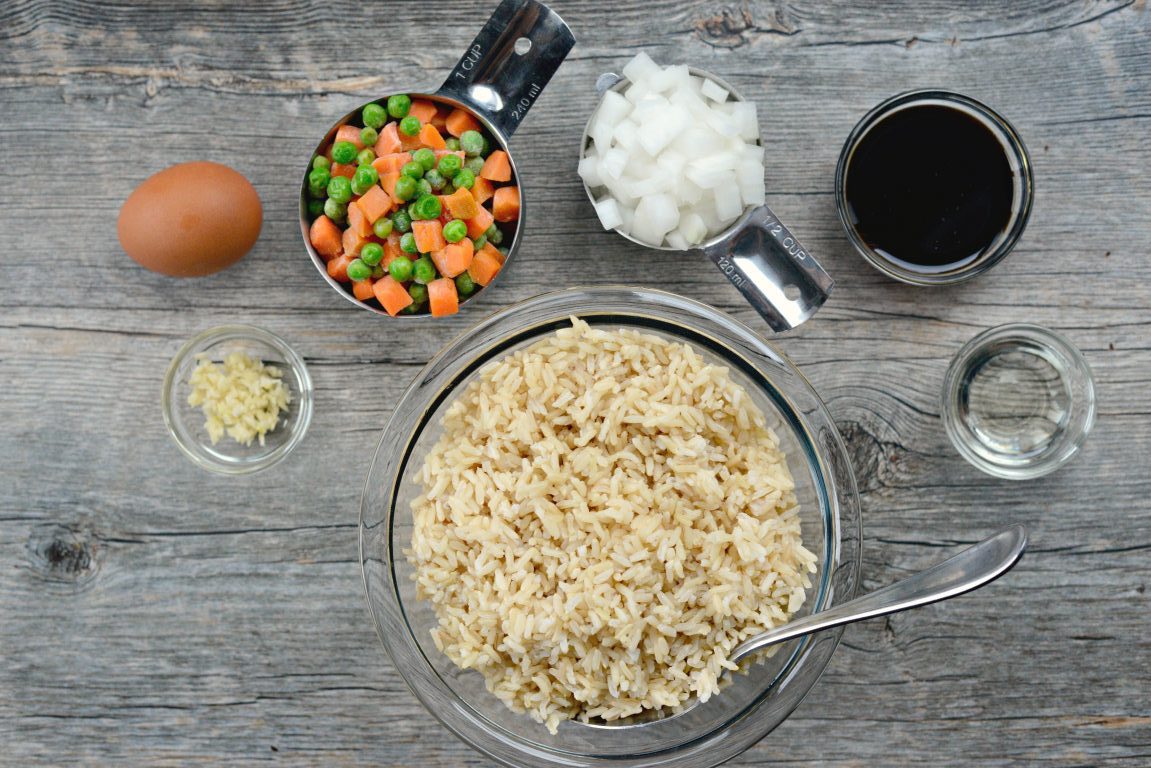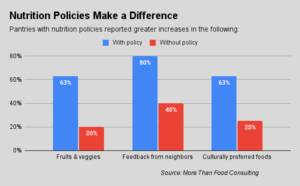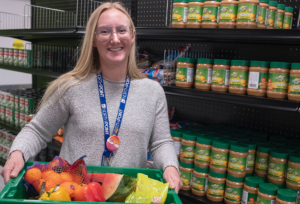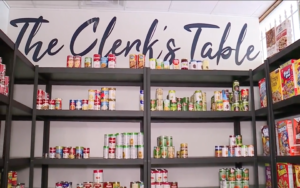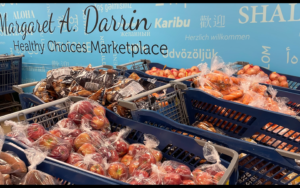As a graduate student at Yale University, Emma Stein marveled at the sheer convenience of meal preparation kits like Blue Apron and Plated. When it came time for her to develop her master’s thesis in public health, it wasn’t a stretch for her to wonder how such kits might be used to solve a common food pantry problem: how to get clients to select healthier foods.
“I was fascinated by the concept,” Stein said. “I thought we could take the commercial meal kit idea and translate it into a low-budget version for the food pantry.”
Her thought was a home run.
While food pantries have been known to hold recipe tastings as a way of getting clients to try new foods, distributing meal kits that bundle together all of a recipe’s ingredients is a far more novel approach and, as it turns out, much more effective than recipe tastings alone.
Over three weeks at the Eat Smart MarketPlace food pantry in Bridgeport, Conn., Stein and her team tested various ways of getting clients to choose kale, brown rice or whole wheat pasta. The detailed findings are available in the journal, Public Health Nutrition.

In one scenario, clients tasted recipes using the ingredients while waiting to enter the pantry. The tastings — Asian-inspired brown fried rice with kale and sauteed kale with cannellini beans over whole wheat pasta — were prepared by a local chef and came with recipe cards.
On other days, the same tastings and recipe cards were available, along with kits that included all the ingredients to make the meals. On still other days, the same healthy foods were available, but without any incentives.
Meal kits turned out to be the key factor in getting clients to choose healthier food. On the days that both tastings and meal kits were available, clients were nearly three times more likely to select healthy food.
Unexpectedly, tastings alone did not move the needle much in terms of nudging clients toward healthy food selections. “We were suprised that the tastings alone didn’t have a big impact,” Stein said.
Given the importance of meal kits in promoting healthy foods, it’s important to develop an approach that can be easily replicated. After exploring various types of cardboard boxes, for example, Stein and her team settled on paper bags to hold the meal kits.
They also used ingredients that were already on hand in the pantry, with the exception of takeout soy sauce packets, which were externally sourced. “At the end of the day, we wanted to make something as sustainable as possible,” Stein said.
Pantries seeking to explore the meal-kit option should similarly keep it simple, she advised. As a start, for example, two to three ingredients could be grouped together on a shelf. “Do what works for you,” Stein said.
